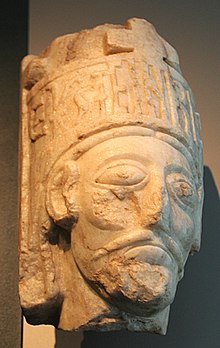Munkeliv Abbey


Munkeliv Abbey (
History
Munkeliv Abbey was founded as a Benedictine abbey by King
In the 1420s it was taken over by the
When the abbey was suppressed during the
Site and buildings
The monastery remains today are beneath the open space known as "the Monastery" (Klosteret) at Nordnes, near numbers 2–6, and nothing is visible. Excavations of the site took place in 1857 and 1860, during which many extremely well crafted structural fragments were recovered. These artifacts are now in the Museum of Cultural History (Kulturhistorisk Museum), part of
The church was approximately 32 metres in length and 11 metres wide, consisting of a single aisle the same width as the choir, which ended in an apse at the east end and also a crypt. A west tower was added in the 13th century. The conventual buildings were to the south of the church. Presumably under the Bridgettines, who carried out extensive building alterations, the cloisters were incorporated into the church.[9]
References
- ^ "Munkeliv". Bergen byleksikon. Retrieved November 1, 2017.
- ^ "Munkeliv kloster". Bergenskartet. Retrieved November 1, 2017.
- ^ "Munkeliv kloster". Kulturminnesøk. Retrieved November 1, 2017.
- ^ Per G. Norseng. "Øystein 1 Magnusson". Store norske leksikon. Retrieved November 1, 2017.
- ^ Erik Opsahl. "vitaliebrødrene". Store norske leksikon. Retrieved November 1, 2017.
- ^ Erik Opsahl. "Olav Nilsson". Norsk biografisk leksikon. Retrieved November 1, 2017.
- ^ "Løveapoteket". Bergen byleksikon. Retrieved November 1, 2017.
- ^ Bergljot Solberg. "Nicolay Nicolaysen". Norsk biografisk leksikon. Retrieved November 1, 2017.
- ^ "Munkeliv kloster". lokalhistoriewiki.no. Retrieved November 1, 2017.
External links
- Norges kloster i middelalderen: Munkeliv (in Norwegian)
- Bergenskartet: Munkeliv Abbey Map of historical Bergen (in Norwegian)
Other sources
- Gullbekk, Svein H. (2009) Pengevesenets fremvekst og fall i Norge i middelalderen (Copenhagen: Museum Tusculanum Press) ISBN 9788763505710
- Lidén, Hans-Emil, and Magerøy, Ellen Maria (1980) Norges kirker, Bergen (Oslo: Gyldendal, vol I, pp 150–57) ISBN 82-05-12367-5
- Øye, Ingvild (ed.) (1994) Bergen and the German Hansa (Bergen: Bryggens Museum) ISBN 82-90289-52-9
